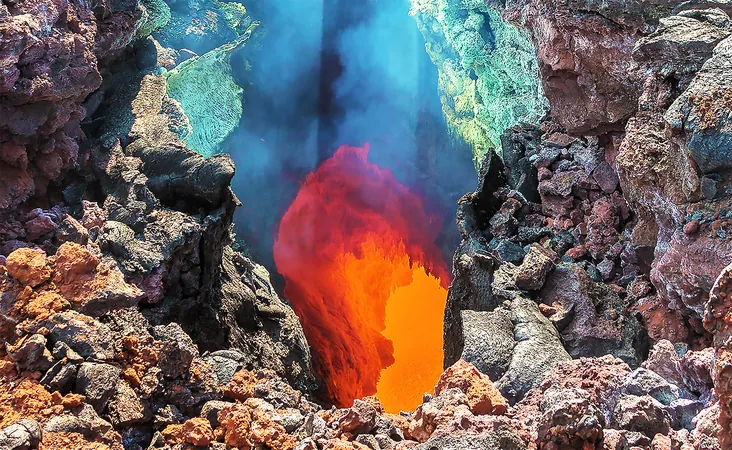
Unveiling the Mystery: North America’s Crust is 'Dripping' Rocks into the Earth’s Mantle!
2025-04-04
Author: Wei
Beneath the seemingly static surface of North America lies a fascinating geological revelation: scientists have uncovered that deep-rooted regions of the continent are gradually "dripping" blobs of rock into the Earth’s mantle. This unusual phenomenon, known as "cratonic thinning," offers a rare glimpse into a dynamic process far beneath our feet, as revealed by a team from the University of Texas at Austin.
What is Cratonic Thinning?
Cratons are ancient and stable rock structures that form the foundation of continents, many of which have persisted for billions of years without substantial alteration. However, researchers have identified that these formations can lose portions of their structure, specifically their deepest root layers. The ongoing research, led by Junlin Hua, a postdoctoral fellow at UT's Jackson School of Geosciences, has showcased that this thinning is currently underway beneath the Midwestern United States—a stunning opportunity for scientists to observe continental reshaping in real-time.
The Role of Ancient Tectonic Plates
This groundbreaking discovery is linked to the remnants of the Farallon Plate, a former oceanic plate that began its descent beneath North America around 200 million years ago. Despite being located approximately 600 kilometers beneath the surface, these remnants continue to influence the geology of the continent above. The flow of mantle material is altered by the Farallon Plate, which weakens and scrapes the underside of the North American craton, releasing volatile substances that further jeopardize its stability.
Advancements in Seismic Technology
To delve deeper into this compelling subject, the research utilized advanced seismic modeling techniques known as full-waveform seismic tomography. This method provides intricate insights into the Earth’s interior, enabling scientists to visualize the specific areas where the dripping phenomenon occurs. Surprisingly, although the most intense dripping is concentrated in the Midwest, signs of cratonic thinning have been detected across a broad spectrum of the continent, including parts of Canada.
Simulation Studies: A Step into the Unknown
In an innovative approach, the scientists constructed dynamic computer simulations to model the mechanics of this process. They found that incorporating the Farallon Plate in their simulations resulted in the craton’s crust beginning to drip. The removal of this plate led to the cessation of the dripping, suggesting a solid correlation between the two events.
Why This Matters
The implications of this research are profound. Not only does it enhance our understanding of continental evolution over geological time, but it also emphasizes that even seemingly immutable structures beneath our feet are influenced by deep-seated forces. The findings herald a new era in geosciences, as researchers refine seismic imaging technologies and develop detailed models that may expose even more dynamic processes reshaping our planet.
In conclusion, this critical research not only heightens our comprehension of Earth's geology but paves the way for future explorations into the essence of our planet's evolution.
Discover the secrets of our planet! Sign up for our newsletter to stay updated on groundbreaking research and geological revelations.





 Brasil (PT)
Brasil (PT)
 Canada (EN)
Canada (EN)
 Chile (ES)
Chile (ES)
 Česko (CS)
Česko (CS)
 대한민국 (KO)
대한민국 (KO)
 España (ES)
España (ES)
 France (FR)
France (FR)
 Hong Kong (EN)
Hong Kong (EN)
 Italia (IT)
Italia (IT)
 日本 (JA)
日本 (JA)
 Magyarország (HU)
Magyarország (HU)
 Norge (NO)
Norge (NO)
 Polska (PL)
Polska (PL)
 Schweiz (DE)
Schweiz (DE)
 Singapore (EN)
Singapore (EN)
 Sverige (SV)
Sverige (SV)
 Suomi (FI)
Suomi (FI)
 Türkiye (TR)
Türkiye (TR)
 الإمارات العربية المتحدة (AR)
الإمارات العربية المتحدة (AR)